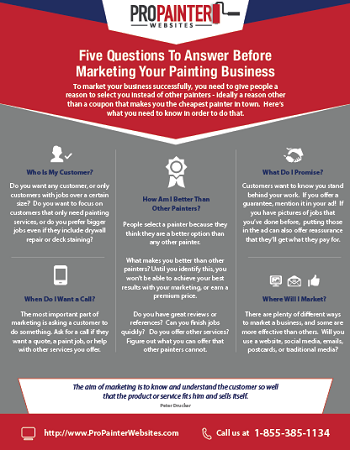Recognizing Seasonal Influences On Commercial Outside Paint: Vital Expertise For Success
Recognizing Seasonal Influences On Commercial Outside Paint: Vital Expertise For Success
Blog Article
Composed By-Ford Urquhart
When you're planning a business outside painting task, seasonal elements can make or damage your outcomes. You'll want to consider just how temperature and moisture influence paint application and drying out times. Selecting the best season can ensure your paint adheres effectively and lasts much longer. Yet which seasons are genuinely the most effective for this type of job? Allow's explore the crucial elements that can influence your task's success.
The Effect of Temperature Level on Paint Application
When you're intending a commercial external painting job, the temperature level can dramatically influence just how well the paint adheres and dries out.
Ideally, you want to paint when temperatures vary between 50 ° F and 85 ° F. If commercial painting brisbane 's as well chilly, the paint might not cure effectively, bring about concerns like peeling or splitting.
On the other hand, if it's as well warm, the paint can dry out as well quickly, protecting against proper adhesion and leading to an irregular finish.
You must additionally think about the time of day; early morning or late afternoon offers cooler temperature levels, which can be much more positive.
Constantly inspect the manufacturer's recommendations for the certain paint you're utilizing, as they frequently offer advice on the ideal temperature level array for optimal outcomes.
Humidity and Its Effect on Drying Times
Temperature level isn't the only environmental aspect that affects your industrial exterior painting job; humidity plays a considerable duty too. High humidity degrees can reduce drying out times substantially, impacting the total top quality of your paint job.
When the air is saturated with moisture, the paint takes longer to heal, which can lead to problems like inadequate attachment and a higher danger of mold development. If mn interior paint color expert on a specifically moist day, be prepared for extensive delay times between coats.
It's critical to keep track of regional weather and strategy appropriately. Ideally, aim for humidity levels between 40% and 70% for optimal drying.
Keeping these consider mind ensures your task remains on track and provides a long-term surface.
Best Seasons for Commercial Outside Painting Projects
What's the very best time of year for your commercial outside paint tasks?
Spring and very early autumn are usually your best bets. During these periods, temperature levels are mild, and moisture levels are frequently reduced, producing excellent conditions for paint application and drying.
Stay clear of summer season's intense heat, which can cause paint to completely dry also swiftly, resulting in inadequate attachment and finish. In a similar way, winter season's chilly temperature levels can prevent correct drying and treating, taking the chance of the durability of your paint work.
Aim for days with temperatures in between 50 ° F and 85 ° F for optimal outcomes. Keep in exterior painter plymouth to check the local weather report for rainfall, as wet problems can ruin your job.
Planning around these aspects ensures your paint project runs efficiently and lasts longer.
Verdict
In conclusion, intending your business external paint projects around seasonal factors to consider can make a considerable distinction in the result. By scheduling job during the suitable temperatures and moisture degrees, you'll make sure better attachment and drying times. Remember to keep an eye on regional weather report and pick the right time of year-- springtime and very early autumn are your best choices. Taking these steps will help you attain a sturdy and specialist finish that lasts.
